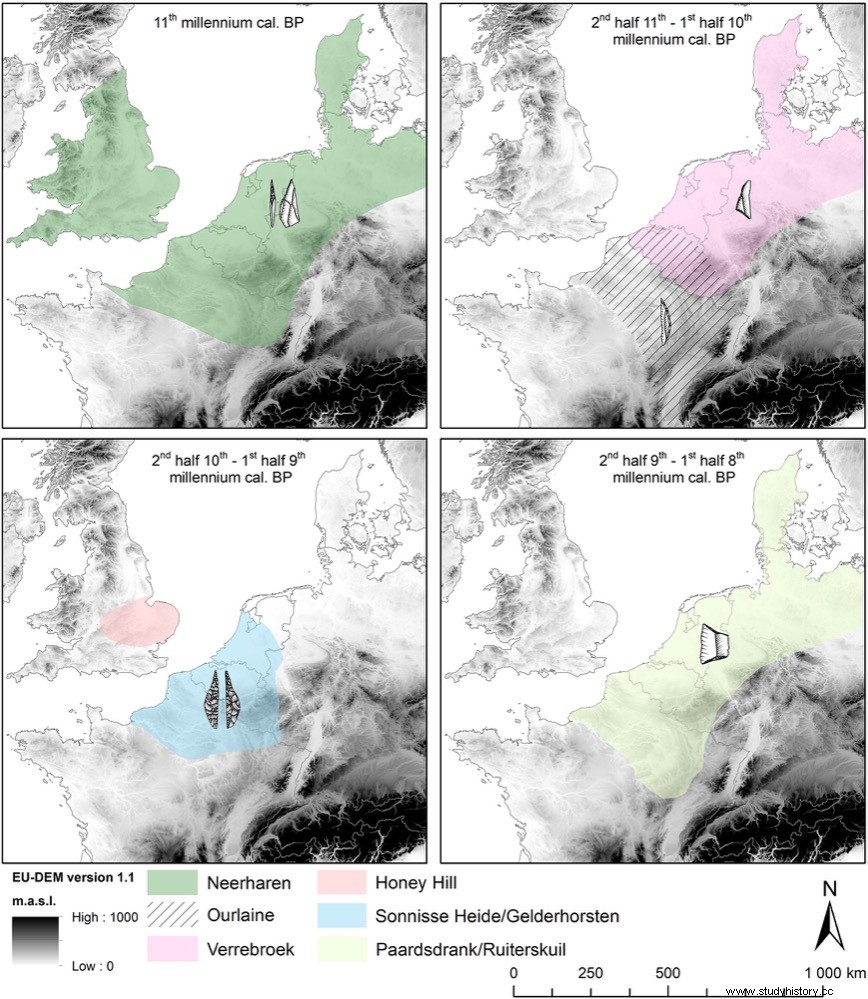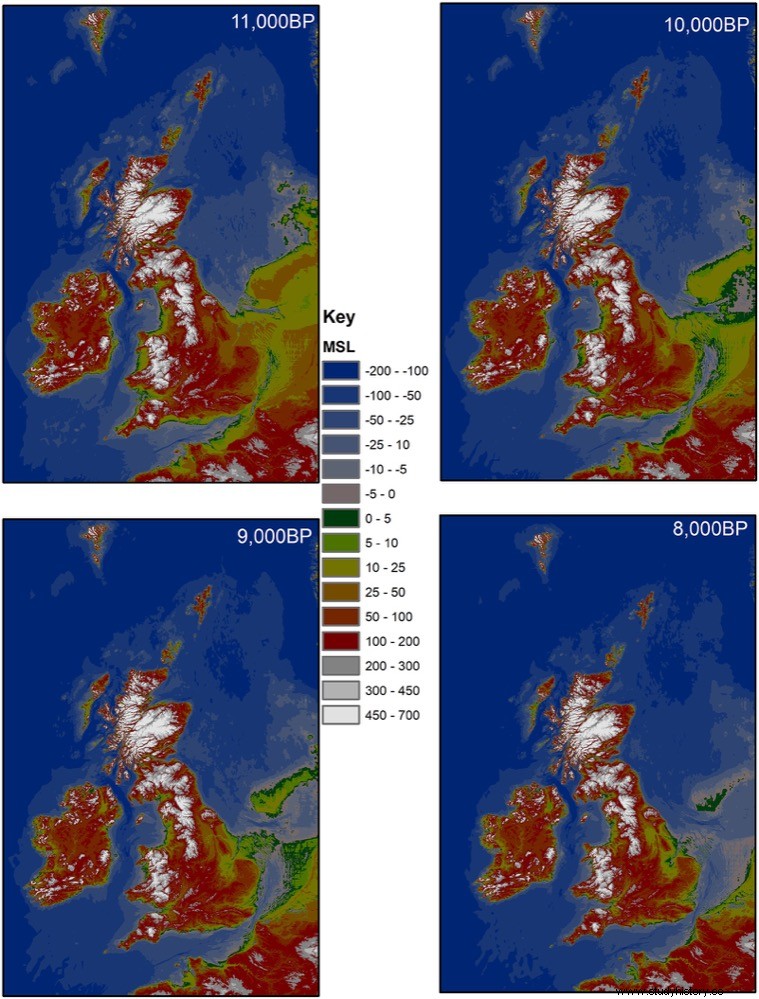The development of new hunting projectiles by European hunter-gatherers during the Mesolithic may have been related to territoriality in a rapidly changing climate, according to a study published in the journal PLOS ONE by Philippe Crombé of Ghent University, Belgium.
As a result of warming occurring at a rate of 1.5-2°C per century, hunter-gatherers in Europe during the Mesolithic era (approximately 11,000-6,000 years ago) experienced significant environmental changes, very similar to those we face today:rising sea levels, increased drought, migrations of plants and animals, and forest fires.
Crombé examined microliths, small stone arrowheads used in hunting, to see how their design and use by Mesolithic hunter-gatherers changed in conjunction with climatic and environmental changes.

Building on archaeological investigations over the past two decades, Crombé used the Bayesian model to reveal possible correlations between the 228 specific radiocarbon dates from Mesolithic sites throughout the southern North Sea basin and the different types and shapes of microliths. (triangles, crescents, microliths in the shape of leaves and mistletoe, trapezoids, etc.) found in these deposits.
The model showed that the variation of microlith shapes is much more complex than previously believed, with frequent coexistence between shapes. Crombé hypothesizes in this study that these different forms of stone microliths developed primarily as a means of distinguishing between the different groups that lived along the North Sea basin (previous research has suggested that two cultures existed). different and geographically distinct in this region).

As sea levels rose and former occupants of the North Sea basin were forced to move to new areas, increased competition and stress over resources could have increased territoriality, including the use of those resources. group membership symbols.
Advances in the shape of microliths, and their greater incision capacity, also seem to be linked to short (1 to 2 centuries) but abrupt climatic events (which themselves would have been linked to increasing environmental and demographic change):introduced triangular microliths after abrupt cooling in the Early Mesolithic associated with erosion and forest fires; a similar climatic event 1,000 years later coincided with the appearance of small dorsal striae and invasive microliths, and an even newer trapezoid-shaped arrowhead replaced these older microliths, at the same time as a third event cooling and causing drought another 1,000 years later.
More research is needed to determine whether these climatic and environmental changes also affected other aspects of Mesolithic behavior.
